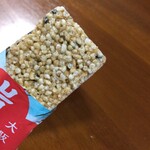
あみだ池大黒 本店
Amidaikedaikoku
3.28
Awaza, Nishinagahori
「Japanese Sweets」
--
--
Opening hours: [Monday-Friday 9:00-18:30 [Saturday] 9:00-17:00
Rest time: Sundays and holidays Business hours and holidays are subject to change, so please check with the store before visiting.
大阪府大阪市西区北堀江3-11-26
Photos
(20)

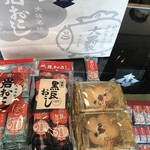
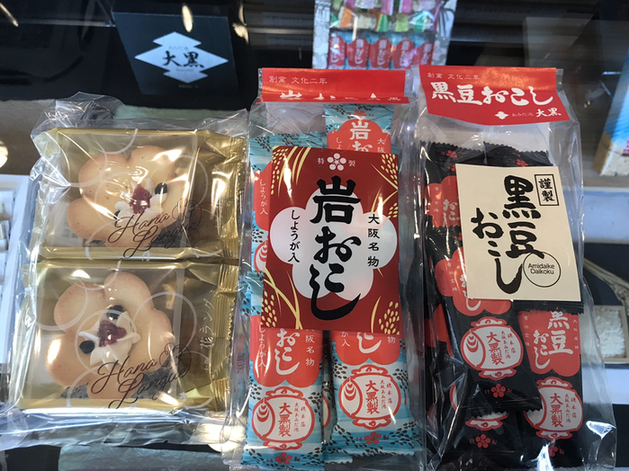
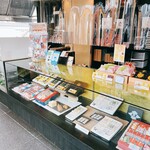
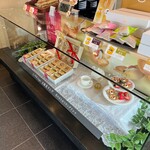

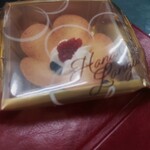
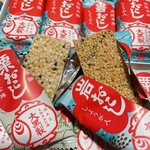
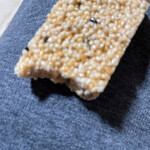
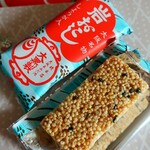
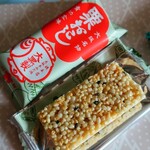
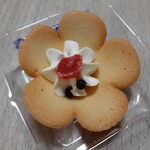
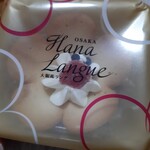
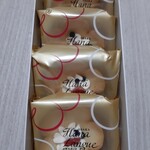
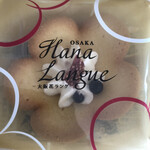
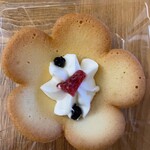
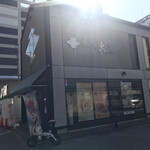
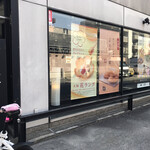
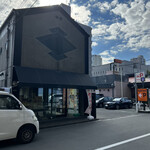
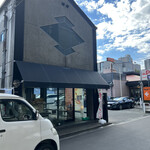
Details
Reservation Info
can be reserved
Payment Method
Cards accepted
(JCB, AMEX)
Electronic money accepted
Smoking and Non-Smoking
No smoking at the table
Comments
(20)
どら身
3.50
The dried fruits were slightly hard and a bit of a bother, but the cream flavor was decent. The crispy langues de chat shaped like flowers are cute and would be well-received by anyone, not just women. It's a mystery why the previous reviews were low. Thank you for the meal! ★彡
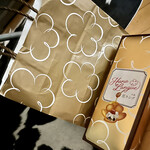


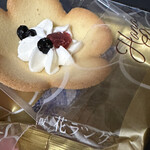
すばる@名古屋
3.30
I received a souvenir from Osaka called "Osaka Hana Lang" - 3 pieces for 583 yen. It consists of Langue de Chat pastry filled with honey whipped cream, dried strawberries, and dried blueberries. The Langue de Chat pastry is definitely delicious. It also looks appealing, making it a great souvenir option.
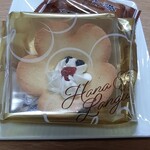

☆食べ過ぎ注意
3.30
I had a snack of "Iwaokoshi" on the airplane. It's been a while since I last had it. Lately, I feel like "Iwaokoshi" has been overshadowed as an Osaka specialty. There are many delicious snacks available now, and when it comes to Osaka specialties, 551's pork buns are famous, and places like Shin-Osaka Station always have long lines. "Iwaokoshi" was nostalgic, with a strong ginger flavor, and it was fresh and delicious to eat after a long time.
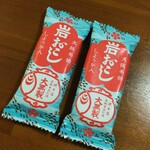

harapeko☆sisters
4.00
High-quality domestically produced rice 100%, crispy but light, it melts softly in your mouth and once you try it, you can't stop. I ended up eating a whole bag in one go, haha. Flavors include: Kansai soy sauce, Awaji Island seaweed salt and nori, black truffle, and shrimp ajillo. Among all the snacks I've had recently, this one was by far the most delicious. It comes in small portions, so you can enjoy a little at a time, which is nice. Both kids and adults love the taste, but my favorite is the truffle flavor! Truffle chips are usually expensive, but these rice chips are quite affordable. Plus, the packaging is very stylish, making it perfect for gifting. If you're curious, definitely check out their website. You'll get hooked! ❤️
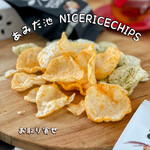
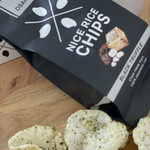

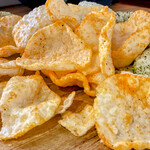
luna..
3.10
I visited takeout at 11:00. I came yesterday, but... I had a little errand (^^;) regarding the Osaka Delicious Food Rally... ◆Osaka Horie caramel baumkuchen×1. The paper bag was a flower langue paper bag.
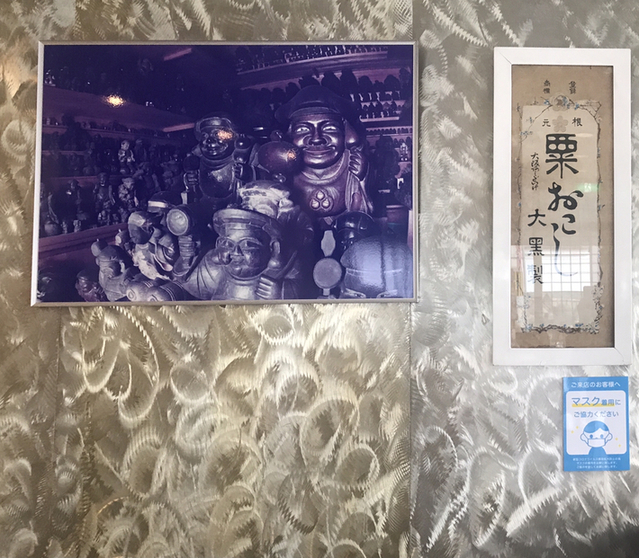
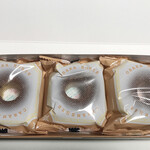
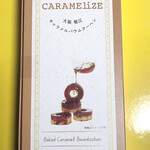
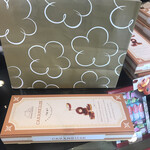
luna..
3.10
I visited takeout at 09:35 to get a stamp for the Osaka Delicious Food Rally. It's not often that I have the chance to go, being from Osaka. I tried rock rice cakes and millet rice cakes when I was little, but this might be the first time trying them as an adult. I thought about buying one of each, but they didn't sell them individually, so I ended up buying quite a few. I got: Osaka flower langue x4, rock rice cakes x20, black bean rice cakes x16, and a rock rice cake as a present. The flower-shaped langue de chat is so cute! I wish they had the millet rice cakes available too. If there's another chance, I'll try them again.



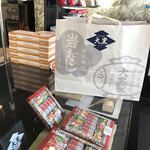
harapeko☆sisters
3.50
Matthew & Crispy are fun snacks made by arranging the classic American treats of marshmallows and rice krispies. They offer a unique design and texture that are enjoyable to eat. This year, they have released Christmas limited edition flavors:
- Fluffy Santa: Santa Claus with a bright red hat and a splendid beard, a charming character.
- Jingle Reindeer: Santa's companion running through the snowy sky, with bells jingling.
- Happy Wreath: Decorate your lovely home and have a Happy Christmas!
These bite-sized treats are easy to eat and pop in your mouth. They are perfect for small gifts or home parties. Be sure to try them out! Additionally, at Amidaike-san, you can create custom-made original sweets by ordering in-store, where you can even have illustrations or images added. They are so cute, so be sure to check out their website! ♡
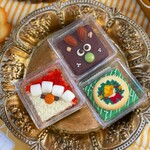
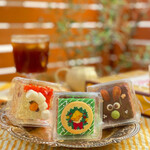
ちーま95291
3.00
I received Osaka souvenirs♪ I love Awaokoshi and Iwaokoshi from Daikoku-san♡ When I was a child, I used to slowly unwrap Daikoku-san's Awaokoshi wrapped in paper and eat it little by little. There were also large boxes with small grains of Awaokoshi wrapped in cellophane like candy. Thanks to the aluminum pack that prevents moisture, the Awaokoshi crackles nicely and the ginger flavor is strong. Even with changes in packaging to suit the times, the deliciousness of Daikoku-san's Awaokoshi remains the same.
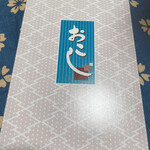
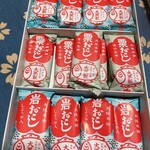

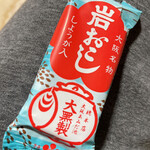
りす3
3.00
<About the Shop>
Established in 1805, this long-standing confectionery shop started with the production of "Awakogashi" by the first generation, Mr. Kobayashi Rinnosuke, at Amida Ike in Osaka. The current owner is the 7th generation, Mr. Kobayashi Shohei.
<Products>
■ Osaka Hana Lang (6 pieces)… 972 yen including tax
・Ingredients: Wheat flour (domestically produced), margarine (including dairy products), dried strawberries, shortening, powdered sugar, egg whites, chocolate, glucose, dried blueberries, liquid eggs, honey, starch hydrolysate, vegetable fats, dried egg whites, whey mineral processed food, honey seasoning, salt/emulsifier (soy-derived), acidulant, coloring (red 40), flavoring, tricalcium phosphate, antioxidant (V.E), sweetener (trichlorogalactosucrose), bleaching agent (sulfite)
・Calories: 44kcal
・Shelf life: 30 days from the date of manufacture
These flower-shaped langues de chat are a project that was launched in 2018 with the goal of creating a confectionery that Osaka residents can proudly recommend as a "Osaka specialty souvenir" that everyone can recognize. After 1 year and 8 months of trial and error, this confectionery was completed. The langues de chat have a crispy texture, with the thin parts resembling flower petals having a particularly good texture. Although the ingredients list does not include butter, it is mentioned that fermented butter is also used. Furthermore, it is blended with honey from bee farms in Osaka, combining three or more types of honey for a fruity taste. The individually packaged langues de chat are easy to distribute and carry, making them a convenient souvenir. Priced at around 160 yen per piece, they are suitable for sharing. I look forward to the day when these become a recognized Osaka specialty souvenir.
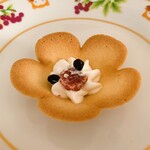
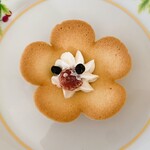

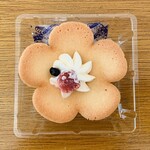
KOUJI328
3.20
Image blog ⇒ "http://kouji328.blog59.fc2.com/blog-entry-4862.html" After a long time, I had a job in Kansai. I took the Hankyu train and got off at Koshienen, one station before Nishinomiya, where I will probably never get off again. Then I worked at Kobe Station, then transferred to JR at Umeda, and returned from Osaka Station to Shin-Osaka to Nagoya. I didn't have time to look for souvenirs, so I ended up going back to Shin-Osaka and quickly selecting some at Ekimarche. No matter where you go, souvenir shops all look the same, but especially in Osaka, traditional souvenirs are surprisingly few. While browsing, I found something nostalgic, "Okoshi" in a flat package! I used to eat it a lot when I was a kid because my grandma always brought it back from Buddhist services and such. It's been decades since I last had it. By the way, when you say "Okoshi," it's usually "Rai Okoshi," but what I used to eat was this nostalgic package. I'm not saying you have to eat it because it's delicious, but I decided to buy it to let my family try it out. It lasts a long time too. Lineup: Awa Okoshi Large 10 pieces including tax 756 yen / Iwa Okoshi Large 10 pieces including tax 756 yen / Osaka Okoshi (Awa Iwa Small 24 pieces) including tax 540 yen / Osaka Castle Lord 600 (including tax 648 yen) / Osaka Castle Lord 1000 (including tax 1080 yen). I think I used to eat the Awa one, but it might have been Iwa, so I chose the "Osaka Okoshi" which includes both small cuts of Awa and Iwa at an affordable price. The sign says "If you're lost for Osaka souvenirs, go for this!" so I guess it's the bestseller? Reference: Amida Ike Daikoku WIKI) Manufactures the classic Osaka souvenir, "Okoshi." The company name comes from the fact that the first generation started manufacturing "Awa Okoshi" by the banks of the Naniwa "Amida Pond" in 1805. Also, the company uses "Daikoku" in its name as the original material for Okoshi is rice, symbolizing the god of good harvest, Daikoku-sama. HP: "Iwa Okoshi: The crispness of ginger enhances the deep richness of black sugar. The unique firmness that gives the name is a deep taste that you can enjoy with each bite." "Awa Okoshi: Rice is roasted to a grain-like texture and combined with fragrant sesame. The traditional flat Okoshi is characterized by its crispy texture." I tried the Awa with 16 pieces and Iwa with 8 pieces. When lined up, the Awa has larger rice grains compared to the Iwa for some reason. However, when eating, there is a slight difference in flavor due to the ginger in the Iwa, but the sweetness of the water candy is strong, and in terms of hardness, the Awa with smaller grains may be harder, but if you were to say that the Iwa is harder, there is a slight difference in feeling... The Iwa is definitely the winner when it comes to Awa or Iwa, but either way, Okoshi is Okoshi. It's not necessarily nostalgic or memorable for me, just something I used to eat as a kid. It might not be memorable for kids these days. In terms of cost performance, it's a good choice for distributing souvenirs. 74 points. WIKI Awa Okoshi Manufacturing Method: Give moisture to grains such as rice and millet, steam them to make mochi. Thinly spread the mochi and dry it, then crush it into grain-like pieces. Roast it with salt in a kettle, expand it with the moisture in the mochi, separate and recover the salt by sieving or gravity method. Add processed peanuts, sesame, and other secondary ingredients, mix them with heated sugar syrup or water candy, spread them out flat, cut them when slightly cooled, or put them in a mold to cool, and make the product.
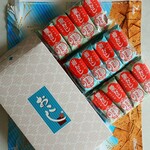


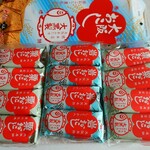
食べてるときと寝てるときが幸せ
3.00
This is a gift. The cute flower-shaped langues de chat cookies are honey flavored. Inside, there is a rich cream with dried strawberries and dried blueberries on top. The sweet langues de chat cookies and cream go well with the refreshing acidity of the berries. The appearance is also cute, so I think it's good for a small gift.



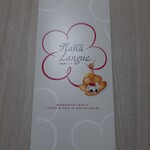
VMAX1700
3.50
I received this as a souvenir from Osaka. When you put it in your mouth, the delicate langues de chat crumbles gently, with a solid cream filling in the center of the petal. On its own, it's just a cute flower-shaped sweet, but with the addition of Osaka-born honey, it becomes an elegant treat with a pleasant lingering aroma.

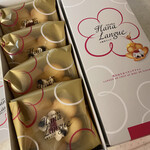

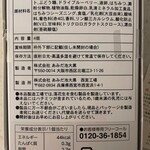
ゆう+☆
4.50
I received a very lovely Osaka Hanarang pastry! The appearance is cute and it tastes delicious! It's the perfect souvenir. Unlike other pastries, the cream in this one is not disappointing, it's really delicious! I wonder where they bought it? I searched and found this place. It says you can order it now, so definitely give it a try!
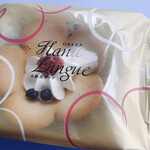
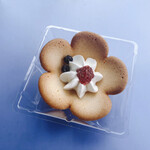
aruko☺︎
3.30
<One day snack>
I visited the main store of a long-established rice cake shop since I was nearby. In addition to rice cakes, there were various other products available. I purchased the "Washinoben Milk Manju" and was impressed by its soft and moist texture. The filling was also smooth and delicious. I think I will choose this as a souvenir for my next trip to Osaka! "Thank you for the meal ☺︎"
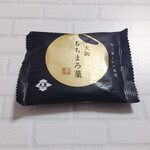

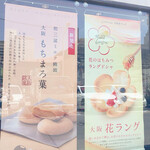
tuinya
4.00
I also thought the challenging attitude of the long-established confectionery shop "Amida Ike Daikoku" at Osaka Hanarang was wonderful. "Osaka Mochimaro-ka" is also a new genre, milk manju. As the name suggests, it has an extremely chewy texture like mochi. The milk, which combines Sanuki's Wazanbon and Wazanbon sugar syrup, has an elegant sweetness. Like Hanarang, it is a new Osaka souvenir. ↑I am participating in the ranking. Thank you for clicking.
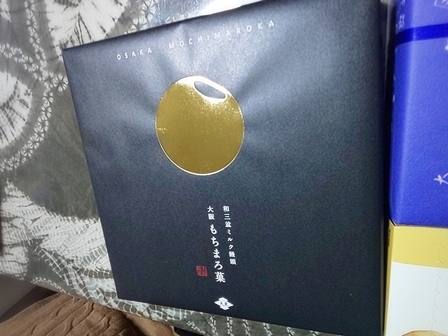

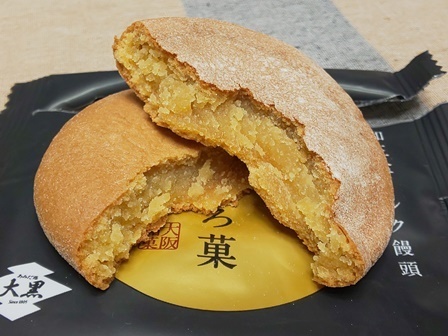
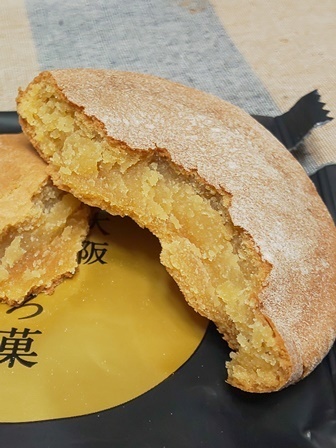
イエローベルモント
3.20
Osaka Mochimaro Kashi for 126 yen. Milk manju is becoming more popular. This is the ultimate milk manju that challenges to bring out the flavor of the highest quality Japanese sugar "Sanuki Wasanbon sugar" to the maximum. The skin with a soft, melting texture in the mouth is made with the finest Hokkaido flour and domestic mochi rice. When you open it, it is 8 millimeters thick and flat. It reminds me of something. When you eat it, it tastes more like a soft cookie than milk manju. Yes, it's similar to Country Ma'am cookies. Ingredients include: Wasanbon sugar white bean paste (domestically made), sugar, flour, mochi rice flour, liquid eggs, butter, white bean paste, Wasanbon sugar syrup, sugar-added egg yolk/trehalose, leavening agent, coloring (caramel), enzymes, emulsifier.
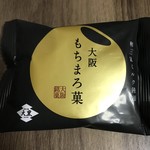
のりさんのりぞぅ
3.00
Exploring different places with my daughter (^-^) Found a cute Baumkuchen. It's so delicious. Just the right size and price for a souvenir. Of course, I got some for myself too (lol) Yummy. A small Baum and a caramel. It's a good combination. The size is perfect for a snack. I really like Baumkuchen. Caramel is good too. I got some for my colleagues since I got a long break. I hope they enjoy eating it (^-^) Sweet treats make you happy (o^^o)
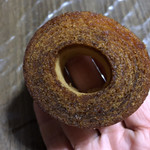
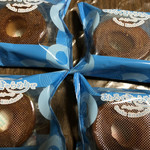
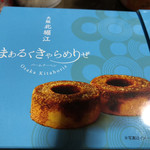
aiko:)
0.00
I received this souvenir from Osaka (^_^) It seems to be a popular souvenir right now. It's a cute langues de chat cookie shaped like a flower. The cookie is crispy and the cream is soft and delicious.
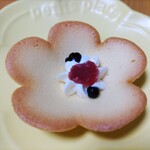
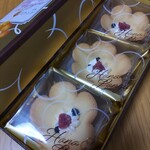
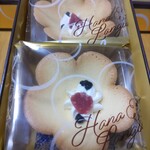
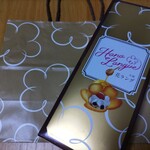
きゆうたろう
0.00
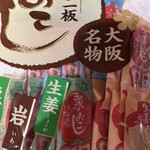
ヨウ ハン
3.30
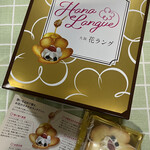
Email Login